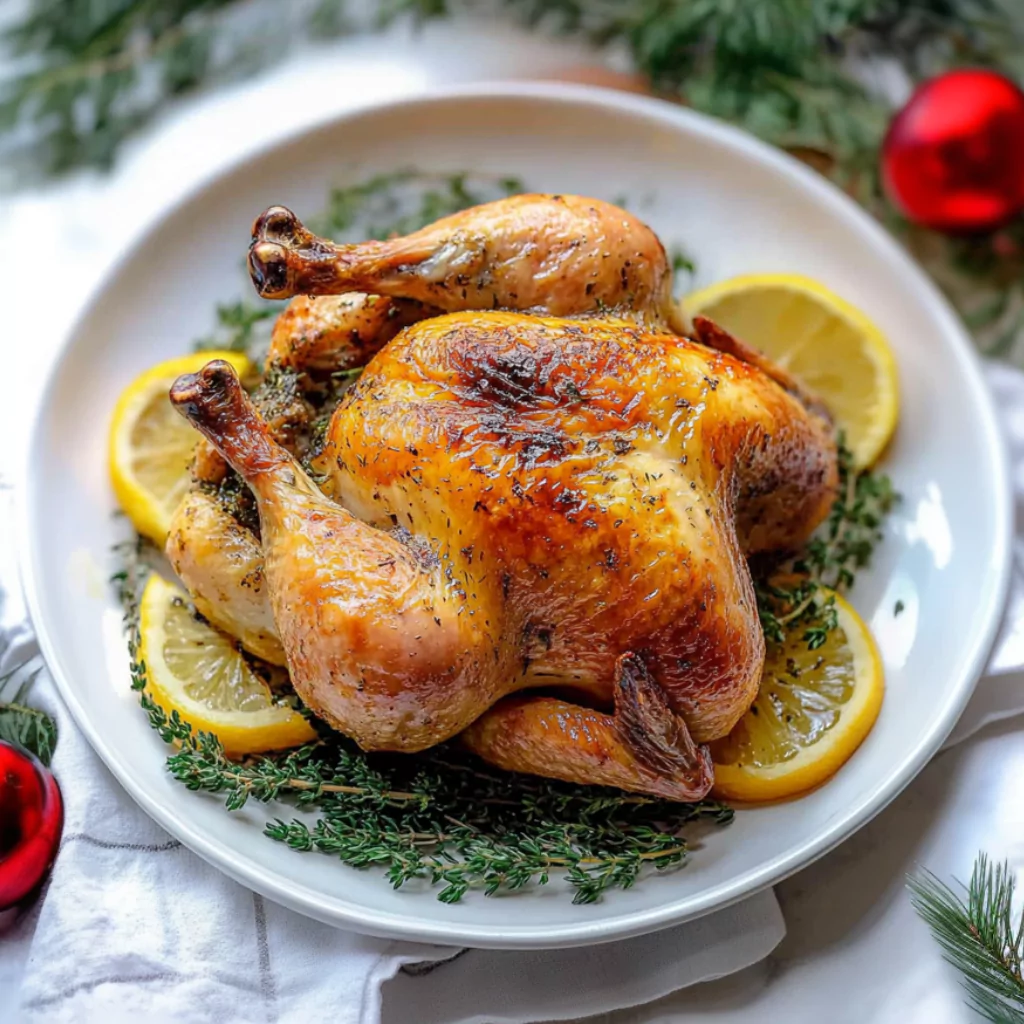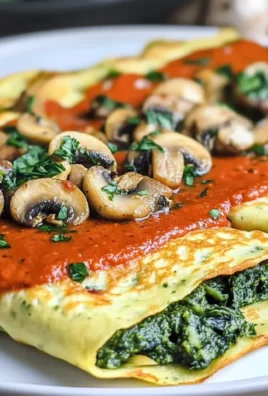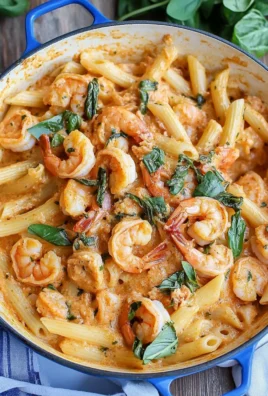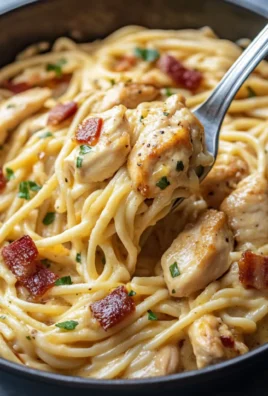When it comes to timeless culinary classics, few dishes can rival the herb-crusted roast chicken. With its golden-brown, crispy skin and tender, flavorful meat, it’s the centerpiece of countless family dinners, holiday celebrations, and weekend gatherings. The magic of this dish lies in the aromatic blend of fresh herbs, garlic, and a perfect roasting technique that brings out its natural flavors.

This recipe is not just about creating a meal—it’s about creating memories. Whether you’re hosting friends, treating your family to a comforting dinner, or simply indulging yourself, a perfectly cooked herb-crusted roast chicken never disappoints.
In this guide, we’ll dive deep into every aspect of preparing the perfect herb-crusted roast chicken. From selecting the right ingredients to mastering the roasting process, we’ll cover it all. Let’s get started on this culinary journey!
What is Herb-Crusted Roast Chicken?
Herb-crusted roast chicken is a simple yet elegant dish where a whole chicken is coated with a fragrant mixture of herbs, garlic, butter, and olive oil. The herbs create a flavorful crust that locks in moisture and enhances the chicken’s natural flavor.
Unlike other chicken recipes that may rely on heavy sauces or marinades, this dish emphasizes the freshness of its ingredients. The herbs not only provide a robust flavor but also create a crispy, golden coating that’s irresistible.
The History and Cultural Significance of Roast Chicken
Roasting chicken is a technique that dates back centuries and has roots in many cultures. The ancient Romans were known to roast meats, including poultry, over open flames. Over time, roasting methods evolved, with different cultures adding their own twists to the process.
In French cuisine, roasted chicken is considered a staple, often paired with roasted vegetables and a rich jus. In the United States, it’s a favorite for Sunday family dinners. The use of fresh herbs to coat the chicken is a more modern adaptation, inspired by Mediterranean cooking, where herbs like rosemary, thyme, and parsley are frequently used to enhance roasted meats.
Herb-crusted roast chicken symbolizes comfort and sophistication, making it a go-to choice for both everyday meals and special occasions.
Preparation Phase and Tools to Use
Essential Preparation Details
Before diving into the recipe, it’s crucial to understand the preparation process. This ensures that your chicken is flavorful, evenly cooked, and has that signature crispy skin.
Prep Time:
- 20 minutes
Cook Time:
- 1 hour 30 minutes
Cooling Time:
- 10 minutes
Total Time:
- Approximately 2 hours
Servings:
- 6 servings
Essential Tools and Equipment
To achieve the best results, you’ll need the right tools. Here’s a list of essential equipment:
- Roasting Pan: A sturdy pan with high sides to collect juices.
- Meat Thermometer: To ensure your chicken is cooked to perfection (165°F in the thickest part of the thigh).
- Basting Brush: For applying the herb mixture evenly.
- Kitchen Twine: To truss the chicken for even cooking.
- Sharp Knife: For carving the chicken once it’s cooked.
- Cutting Board: For resting and carving the chicken.
Importance of Each Tool
- A roasting pan ensures even heat distribution.
- A meat thermometer removes any guesswork, ensuring your chicken is neither overcooked nor undercooked.
- A basting brush ensures that the herb mixture is evenly applied, enhancing flavor.
- Kitchen twine helps keep the chicken’s shape intact and promotes even cooking.
Preparation Tips
Choosing the Right Chicken
The quality of your chicken plays a significant role in the final dish. Opt for organic or pasture-raised chicken for the best flavor and texture. These chickens tend to have a richer taste compared to factory-farmed ones.
Cleaning the Chicken
- Remove any giblets from the cavity.
- Rinse the chicken under cold water and pat it completely dry with paper towels. Dry skin is key to achieving crispy skin during roasting.
Seasoning Tips
- Be generous with the seasoning. Salt enhances the natural flavors of the chicken, while herbs and spices add depth.
- Apply the herb mixture under the skin for maximum flavor.
Ingredients List
For the Chicken:
- 1 whole chicken (4-5 pounds)
- 1 teaspoon salt
- ½ teaspoon black pepper
For the Herb Crust:
- 3 tablespoons olive oil
- 2 tablespoons unsalted butter, melted
- 4 garlic cloves, minced
- 1 tablespoon fresh rosemary, finely chopped
- 1 tablespoon fresh thyme leaves
- 1 tablespoon fresh parsley, finely chopped
- 1 teaspoon paprika
Optional (For the Cavity):
- 1 lemon, halved
- Extra sprigs of rosemary and thyme
Optional (For Roasting):
- 2 carrots, chopped
- 1 onion, quartered
- 2 potatoes, cubed
Step-by-Step Instructions
Step 1: Preheat the Oven
- Preheat your oven to 425°F (220°C). This temperature ensures that the chicken skin will crisp up nicely while the meat cooks evenly.
Step 2: Prepare the Herb Mixture
- In a small bowl, mix olive oil, melted butter, minced garlic, rosemary, thyme, parsley, paprika, salt, and pepper. This will form a thick, aromatic paste that will coat the chicken.
Step 3: Prepare the Chicken
- Place the chicken on a cutting board and pat it completely dry with paper towels.
- Remove any excess fat or feathers from the chicken.
- Stuff the cavity with lemon halves and additional herb sprigs (optional).
Step 4: Apply the Herb Mixture
- Gently loosen the skin over the chicken breast by sliding your fingers under it.
- Rub half of the herb mixture under the skin and the other half over the skin, making sure to coat the entire chicken evenly.
Step 5: Truss the Chicken
- Tie the legs together with kitchen twine to ensure even cooking. Tuck the wing tips under the body to prevent them from burning.
Step 6: Roast the Chicken
- Place the chicken breast-side up in a roasting pan.
- Arrange chopped vegetables (carrots, onions, potatoes) around the chicken if desired. These will roast alongside the chicken, absorbing its flavors.
Step 7: Baste the Chicken
- Halfway through the roasting time, baste the chicken with the pan juices to keep it moist and flavorful.
Step 8: Check for Doneness
- After about 1 hour and 30 minutes, use a meat thermometer to check the internal temperature. Insert it into the thickest part of the thigh without touching the bone. The chicken is done when it reaches 165°F.
Step 9: Rest the Chicken
- Remove the chicken from the oven and let it rest for 10 minutes. This allows the juices to redistribute, ensuring moist meat.
Step 10: Carve and Serve
- Use a sharp knife to carve the chicken into serving pieces. Serve with the roasted vegetables or your favorite side dishes.
Side Dish Recommendations
No roast chicken dinner is complete without a lineup of delicious side dishes that complement its rich, savory flavors. Here are some of the best options to serve alongside your herb-crusted roast chicken:
Garlic Mashed Potatoes
Creamy, buttery mashed potatoes infused with roasted garlic are the perfect pairing for the herb-crusted roast chicken. The soft texture of the potatoes provides a delightful contrast to the crispy chicken skin. To prepare, boil peeled potatoes until tender, mash them with roasted garlic, butter, and cream, and season with salt and pepper.
Roasted Vegetables
Roasting vegetables alongside the chicken allows them to soak up the flavorful juices from the bird. Popular options include carrots, Brussels sprouts, red onions, and parsnips. Toss them with olive oil, salt, pepper, and a sprinkle of rosemary before roasting for caramelized perfection.
Wild Rice Pilaf
For a hearty and nutty side dish, consider wild rice pilaf. The earthy flavors of wild rice pair beautifully with the herbal notes of the chicken. Cook the rice in chicken broth and mix in sautéed mushrooms, chopped onions, and fresh parsley.
Garden Salad
A fresh, crisp garden salad provides a refreshing contrast to the richness of the roasted chicken. Use a mix of greens like arugula, spinach, and romaine, and add sliced cucumbers, cherry tomatoes, red onions, and a light vinaigrette made from olive oil, lemon juice, and Dijon mustard.
Homemade Dinner Rolls
Warm, fluffy dinner rolls are perfect for soaking up the flavorful pan juices or gravy from the chicken. You can make them from scratch or use a store-bought option for convenience. Serve them fresh from the oven, brushed with melted butter.
Cranberry Sauce
Cranberry sauce isn’t just for turkey—it’s a surprisingly excellent accompaniment for roast chicken. The tangy-sweet flavor of the sauce balances the savory, herbaceous taste of the chicken. Opt for a homemade version with fresh cranberries, orange juice, and a touch of honey.
Creamed Spinach
For a rich and indulgent side, creamed spinach is a fantastic choice. The creamy sauce, made with butter, cream, and Parmesan cheese, perfectly complements the chicken’s crispy skin. Adding garlic and nutmeg to the sauce enhances its flavor.
Grilled Asparagus
Grilled asparagus is a light and healthy side dish that adds a touch of elegance to your meal. Drizzle the asparagus with olive oil, sprinkle with salt and pepper, and grill until tender-crisp. A squeeze of fresh lemon juice before serving elevates the flavors even further.
Nutritional Information and Health Benefits
Roast chicken, especially when prepared with fresh herbs and roasted rather than fried, is a nutritious and well-balanced main dish. Let’s break down the key nutritional elements and explore the health benefits of herb-crusted roast chicken.
Nutritional Profile of Herb-Crusted Roast Chicken
- Protein: Chicken is an excellent source of lean protein, essential for muscle growth, tissue repair, and overall body function. A single serving of roasted chicken provides a significant portion of the daily recommended protein intake.
- Fats: The use of olive oil and butter in this recipe provides healthy fats, including monounsaturated fats from olive oil. These fats can support heart health when consumed in moderation.
- Vitamins and Minerals: Chicken contains important vitamins and minerals, including B vitamins (such as B6 and B12) for energy production, zinc for immune health, and phosphorus for bone health. The addition of herbs like rosemary and parsley also adds antioxidants and essential nutrients.
Health Benefits of Fresh Herbs
The fresh herbs in this recipe do more than enhance flavor—they also offer numerous health benefits:
- Rosemary: Contains compounds with anti-inflammatory and antioxidant properties. It’s also known to support digestion and improve circulation.
- Thyme: Rich in vitamin C and other antioxidants, thyme can boost the immune system and promote respiratory health.
- Parsley: A powerhouse of vitamins K, C, and A, parsley supports bone health, boosts immunity, and aids digestion.
Why Roasting is a Healthy Cooking Method
Roasting chicken is a healthier alternative to frying, as it requires minimal added fats. The high temperature of roasting also locks in the chicken’s natural juices, resulting in a tender and flavorful dish without excessive oil or butter. Additionally, the herb crust adds flavor without the need for heavy sauces or marinades.
Tips for Making the Dish Healthier
- Use olive oil instead of butter for the herb mixture to reduce saturated fat.
- Skip stuffing the cavity with lemon if you’re avoiding added acidity for dietary reasons.
- Pair the chicken with lighter sides like salads or steamed vegetables to keep the meal balanced.
Common Mistakes to Avoid and How to Perfect the Recipe
While herb-crusted roast chicken is a straightforward dish, a few common mistakes can impact the final result. Here are some pitfalls to avoid and tips for achieving perfection every time.
Mistake 1: Not Drying the Chicken Properly
Failing to thoroughly dry the chicken before applying the herb mixture can result in soggy skin instead of the desired crispy crust. Always pat the chicken dry with paper towels to remove excess moisture.
Mistake 2: Under-Seasoning the Chicken
One of the biggest mistakes is not using enough seasoning. Remember, the seasoning must penetrate both the skin and the meat. Be generous with the herb mixture, and don’t forget to season the cavity.
Mistake 3: Overcooking the Chicken
Overcooked chicken can become dry and tough. Use a meat thermometer to check the internal temperature, ensuring it reaches 165°F in the thickest part of the thigh. Avoid relying on visual cues alone.
Mistake 4: Skipping the Resting Period
Carving the chicken immediately after roasting causes the juices to run out, leaving the meat dry. Always let the chicken rest for at least 10 minutes before carving. This allows the juices to redistribute, resulting in moist and tender meat.
Mistake 5: Using Dried Herbs Instead of Fresh Ones
While dried herbs can be used in a pinch, they don’t provide the same vibrant flavor as fresh ones. Fresh rosemary, thyme, and parsley give the dish a robust, aromatic quality that dried herbs cannot replicate.
Mistake 6: Neglecting to Baste the Chicken
Basting helps keep the chicken moist and enhances the flavor of the skin. Make sure to baste the chicken with pan juices at least once or twice during roasting.
Mistake 7: Not Trussing the Chicken
Skipping the trussing step can result in uneven cooking. Trussing ensures that the legs and wings stay close to the body, allowing the chicken to cook more evenly and retain its shape.
Mistake 8: Choosing the Wrong Roasting Pan
Using a pan that’s too shallow can cause juices to overflow, while a pan that’s too deep can prevent proper browning. Choose a roasting pan with high sides and enough space for the chicken and optional vegetables.
Mistake 9: Forgetting to Check the Oven Temperature
Not all ovens heat evenly, so it’s important to check the temperature accuracy. Use an oven thermometer to ensure your oven is at the correct temperature for roasting.
Mistake 10: Skipping the Vegetables
Adding vegetables around the chicken not only enhances the meal but also absorbs the delicious juices, creating a flavorful side dish.
Tips for Perfecting Your Herb-Crusted Roast Chicken
How to Store Leftovers Properly
Storing leftover herb-crusted roast chicken the right way ensures it stays fresh and retains its flavor for future meals.
- Refrigeration: Place leftover chicken in an airtight container and store it in the refrigerator for up to 3-4 days. Be sure to separate the meat from the bones for easier reheating and storage.
- Freezing: For longer storage, freeze leftover chicken. Wrap the chicken tightly in plastic wrap, followed by aluminum foil, or store it in a freezer-safe bag. It will stay fresh for up to 2-3 months.
Reheating Tips
Reheating chicken without drying it out can be tricky, but these methods will keep it juicy and flavorful:
- Oven Method: Preheat your oven to 350°F (175°C). Place the chicken in an oven-safe dish, cover it with foil to retain moisture, and heat for 15-20 minutes. For crispy skin, remove the foil during the last 5 minutes.
- Stovetop Method: Shred the leftover chicken and warm it in a skillet over medium heat with a splash of chicken broth or water. This method prevents the meat from drying out.
- Microwave Method: For convenience, use the microwave. Place the chicken on a microwave-safe plate, cover it with a damp paper towel, and heat it in short intervals (30 seconds at a time) to avoid overcooking.
Repurposing Leftovers
Leftover herb-crusted roast chicken can be transformed into entirely new dishes:
- Chicken Salad: Combine shredded chicken with mayonnaise, Dijon mustard, diced celery, and fresh herbs for a quick and delicious chicken salad.
- Chicken Sandwiches: Pile shredded chicken onto a toasted bun with lettuce, tomato, and a smear of garlic aioli.
- Chicken Soup: Add the leftover chicken to a pot of broth with noodles, vegetables, and seasonings for a comforting soup.
- Chicken Tacos: Toss the chicken with taco seasoning and serve it in warm tortillas with salsa, guacamole, and shredded cheese.
- Chicken Fried Rice: Mix the chicken with rice, scrambled eggs, vegetables, and soy sauce for a quick and hearty fried rice dish.
Notes and Substitutions
Ingredient Substitutions
- Chicken: This recipe works well with other poultry, such as turkey or Cornish hens. Adjust the cooking time based on the size of the bird.
- Herbs: If fresh herbs are unavailable, substitute with dried herbs. Use 1 teaspoon of dried herbs for every tablespoon of fresh herbs called for in the recipe.
- Butter: For a healthier alternative, replace butter with additional olive oil.
- Vegetables: Customize the roasted vegetables to your liking. Sweet potatoes, zucchini, or fennel are great alternatives.
Adapting the Recipe for Dietary Needs
- Low-Sodium Option: Reduce the amount of salt used in the herb mixture. You can also opt for unsalted butter and low-sodium chicken broth if you’re adding vegetables.
- Low-Fat Option: Use olive oil exclusively and skip the butter entirely.
- Gluten-Free: This recipe is naturally gluten-free, but ensure that any store-bought ingredients (like spices or broth) are certified gluten-free.
FAQs
What is the best herb combination for roast chicken?
While rosemary, thyme, and parsley are classic choices, feel free to experiment with other herbs such as sage, oregano, or tarragon. Each herb brings a unique flavor profile that can enhance the chicken in different ways.
Can I use dried herbs instead of fresh ones?
Yes, dried herbs can be used as a substitute. However, dried herbs are more concentrated, so use about 1/3 of the amount specified for fresh herbs.
How do I ensure my chicken skin stays crispy?
- Pat the chicken completely dry before applying the herb mixture.
- Cook at a high temperature (425°F) to render the fat under the skin.
- Avoid covering the chicken with foil during roasting, as this traps steam and softens the skin.
What is the best way to check if the chicken is cooked properly?
Use a meat thermometer to check the internal temperature. Insert it into the thickest part of the thigh without touching the bone. The chicken is safe to eat when the temperature reaches 165°F.
Can I prepare the chicken ahead of time?
Yes! You can season the chicken and store it in the refrigerator for up to 24 hours before cooking. This allows the flavors to penetrate the meat, making it even more flavorful.
How do I prevent the chicken from drying out?
- Baste the chicken with pan juices at least once or twice during roasting.
- Avoid overcooking by using a meat thermometer to monitor the internal temperature.
- Let the chicken rest after roasting to allow the juices to redistribute.
What are some wine pairings for herb-crusted roast chicken?
- A crisp white wine like Sauvignon Blanc or Chardonnay pairs beautifully with the herbal notes of the chicken.
- For red wine lovers, a light Pinot Noir is a great choice.
- If you prefer sparkling wine, Prosecco or Champagne adds a celebratory touch to the meal.
Can I use the same recipe for turkey or other poultry?
Yes, this herb crust works wonderfully with turkey, Cornish hens, or even duck. Adjust the cooking time based on the size and type of bird.
Conclusion
Herb-crusted roast chicken is a dish that combines simplicity with elegance, making it perfect for any occasion. The golden-brown crust, aromatic herbs, and juicy, tender meat create a sensory experience that’s hard to beat. Whether you’re preparing it for a family dinner, a holiday celebration, or a special gathering, this recipe is sure to impress.
Beyond its flavor, this dish is highly versatile. You can customize it with your choice of herbs, vegetables, and side dishes, ensuring it fits your personal preferences and dietary needs. The leftovers are just as versatile, providing endless possibilities for delicious repurposed meals.
If you’re ready to elevate your roast chicken game, this guide has equipped you with all the tips, tricks, and techniques you need. Don’t forget to share your results and explore other recipes to complement your herb-crusted roast chicken.
Let this dish become a staple in your kitchen—a comforting classic you’ll return to time and time again.




Leave a Comment